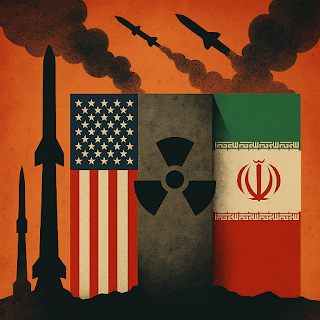Operation Midnight Hammer: Unpacking the US Strikes on Iran’s Nuclear Site
In a dramatic escalation of tensions in the Middle East, the United States launched a coordinated bombing campaign on June 21, 2025, targeting three of Iran’s most critical nuclear facilities—Fordow, Natanz, and Isfahan. The operation, dubbed "Operation Midnight Hammer", marks one of the most significant military actions in the region in recent years and has reignited global debate over nuclear proliferation, regional stability, and the limits of military power.
The Strike: Precision and Power
According to the Pentagon, the mission involved seven B-2 Spirit bombers flying from Whiteman Air Force Base in Missouri, supported by decoy aircraft and Tomahawk cruise missiles launched from a U.S. submarine. The primary targets were Iran’s underground enrichment facilities, which were struck with GBU-57 "bunker buster" bombs, designed to penetrate fortified structures.
The strikes reportedly caused extensive damage to the sites, particularly at Fordow, where satellite imagery later revealed collapsed tunnel entrances and disrupted infrastructure.
Iran’s Response: Retaliation and Resilience
Iran responded swiftly. Just days after the bombing, Tehran launched a missile attack on the U.S. Al Udeid Air Base in Qatar, claiming it as a retaliatory measure for what it called “blatant military aggression”. The Islamic Revolutionary Guard Corps (IRGC) emphasized that the strike was carefully calibrated to avoid civilian casualties and reaffirmed Iran’s commitment to defending its sovereignty.
Meanwhile, satellite images showed Iran had already begun repair efforts at the Fordow site, suggesting a rapid mobilization to restore its nuclear capabilities.
Political Fallout: War Powers and Warnings
Back in Washington, the strikes sparked a fierce debate. The U.S. Senate narrowly rejected a resolution that would have required congressional approval for further military action against Iran. President Trump, who authorized the operation, warned that future bombings were on the table if Iran resumed uranium enrichment at threatening levels.
Iran’s Supreme Leader Ayatollah Khamenei, in his first remarks after the ceasefire, declared that Iran had “slapped America in the face” by retaliating against the U.S. base in Qatar.
What’s Next?
The situation remains volatile. While the U.S. has declared the mission a success, questions linger about the long-term impact. Can Iran’s nuclear ambitions truly be curbed through force? Will this lead to a broader regional conflict? And how will global powers respond to this high-stakes chess match?
One thing is clear: the echoes of Operation Midnight Hammer will reverberate far beyond the mountains of Iran.


Comments
Post a Comment